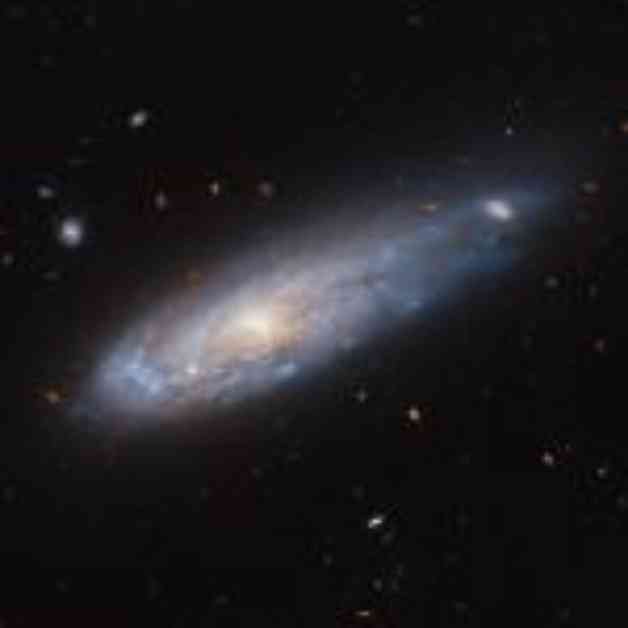The image captured by the NASA/ESA Hubble Space Telescope shows the spiral galaxy IC 3225, which appears to be moving through space like a comet with a tail of gas trailing behind. Despite its calm appearance from Earth, this galaxy is actually located about 100 million light-years away and is part of the Virgo galaxy cluster, which contains over 1,300 galaxies.
The Virgo galaxy cluster’s density creates a field of hot gas called the ‘intracluster medium,’ which exerts pressure on the moving galaxies within it. This pressure, known as ram pressure, can strip galaxies of their gas and dust, affecting their ability to form new stars. IC 3225 has likely experienced ram pressure stripping in the past, leading to its compressed appearance on one side with increased star formation, and its stretched-out shape on the opposite side.
Astronomers believe that the galaxy’s interaction with other galaxies in the cluster may have contributed to its distorted shape. This observation serves as a powerful reminder of the immense forces at play in the universe, capable of moving and reshaping entire galaxies. The study of galaxies like IC 3225 provides valuable insights into the dynamics of galaxy clusters and the impact of environmental factors on their evolution.
Understanding how galaxies interact within clusters and the effects of ram pressure on their structure and star formation processes is essential for unraveling the mysteries of the universe. By studying cosmic phenomena such as IC 3225, scientists can gain a deeper understanding of the complex processes that shape the galaxies we see in the night sky.
The Hubble Space Telescope’s ability to capture such detailed images of distant galaxies like IC 3225 allows researchers to study these cosmic cannonballs and uncover the secrets of their evolution. Each discovery brings us closer to unlocking the mysteries of the universe and expanding our knowledge of the vast and dynamic cosmos that surrounds us.













